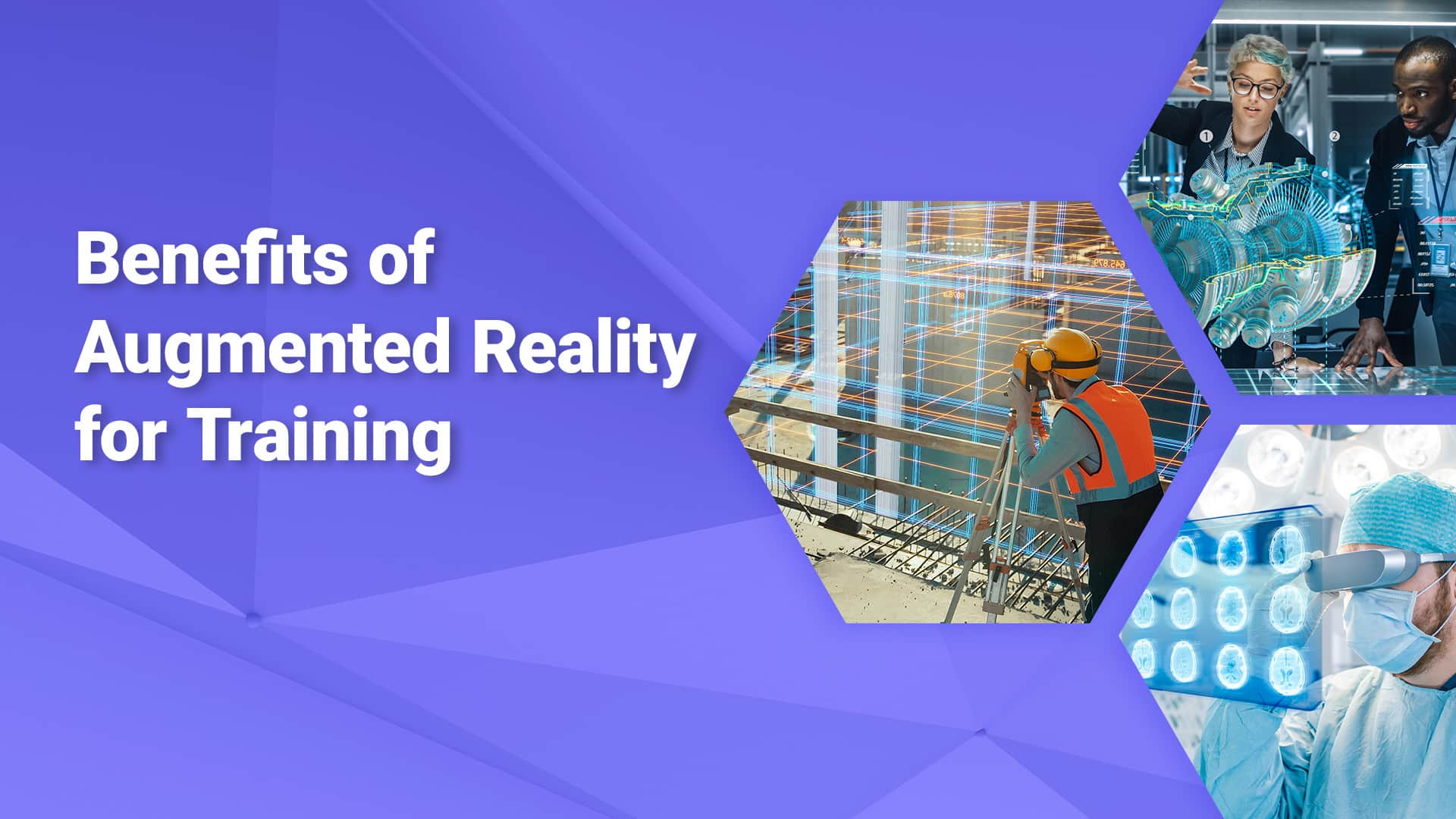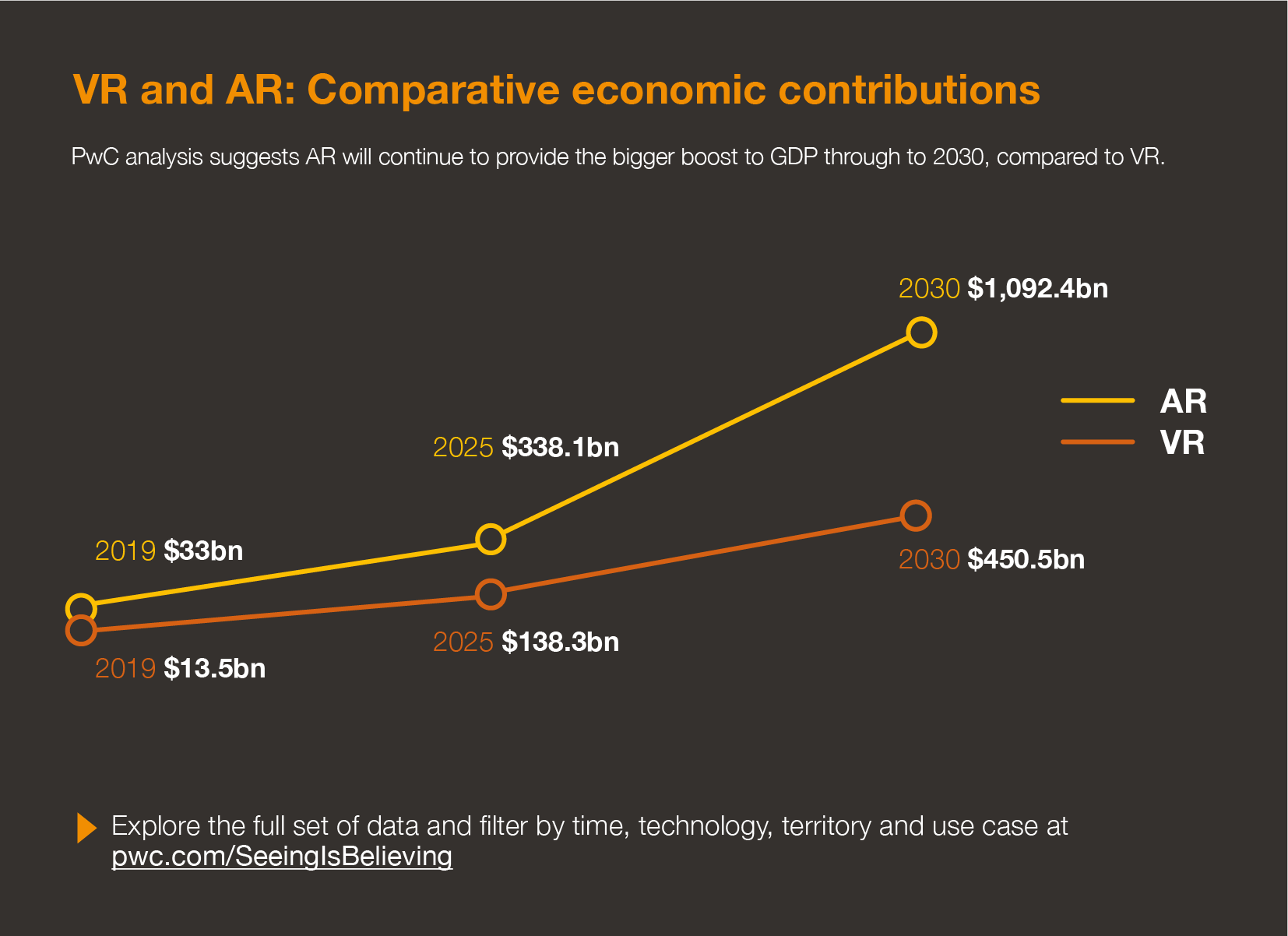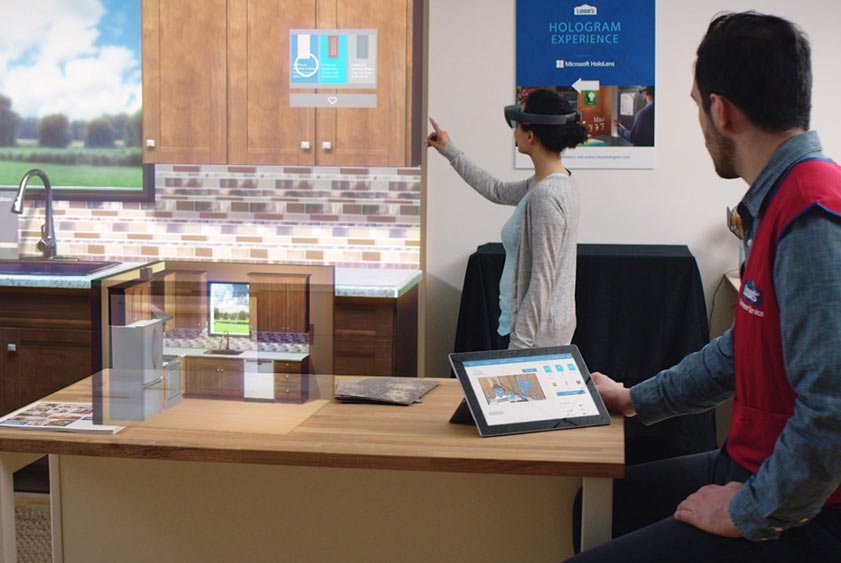Exploring the Benefits of Augmented Reality for Training
- April 26, 2023
- AR, EDU, Enterprise, Healthcare

Benefits of Augmented Reality
Training is a critical aspect of any organization that wants to improve the skills and knowledge of its workforce. Innovation has played a crucial role in changing the training and development of employees in various industries. One such innovation is augmented reality (AR). Augmented reality (AR) training is a type of training that uses technology to enhance the learning experience by overlaying digital information onto the physical world. This technology allows learners to interact with digital objects and information in real time using their smartphones, tablets, or AR-enabled devices.
What is Augmented Reality?
Augmented reality is a technology that overlays computer-generated objects or information onto the real world. By combining the digital and real worlds, AR creates a more immersive and interactive experience. AR operates through devices such as smartphones, tablets, and head-mounted displays.
AR has become increasingly popular recently, with companies using it to create engaging and interactive customer experiences. For example, furniture retailers use AR to allow customers to visualize how a piece of furniture would look in their home before purchasing.
Differences Between Augmented Reality and Virtual Reality
Both augmented reality (AR) and virtual reality (VR) fall under the umbrella of extended reality (XR) technologies. While both AR and VR offer immersive experiences, they differ significantly.
Whereas VR replaces your vision, AR adds to it.
VR devices create immersive virtual environments that consume a user’s field of vision. AR devices offer transparency, letting users see everything in front of them as if they were wearing weak sunglasses.
VR replaces the natural world with the digital.
AR meshes the natural world and digital world together.
While AR and VR are not competing technologies, they serve different purposes and hold different trajectories. According to research conducted by PwC, augmented reality has the potential to have a greater economic impact by 2030.

The Evolution of Training Methods
Employee training has come a long way. From traditional classroom sessions and printed manuals to digital learning and immersive technologies, we will explore the different methods and how they shape your training experience.
Traditional Training Approaches
In the past, training was done in the classroom, on the job, and with written training manuals. Many of us didn’t notice the problems with these ways because we grew up in a world where they were the norm.
These methods often took time and money, and employees had to miss work to attend training classes. Printed guides were also expensive, and as technology and processes changed, they quickly became outdated.
On-the-job training was sometimes effective, but it was often inconsistent and depended heavily on the experience and knowledge of the trainer. This method also didn’t do a good job of giving workers a safe and controlled place to learn and make mistakes.
The Shift to Digital Learning
With the advancement of technology, digital learning grew in popularity. E-learning portals let users receive training materials online. This method was more flexible and affordable than traditional training in a classroom. Employees could learn at their own pace and when convenient for them, and companies could save money on travel and lodging costs for in-person training classes.
Digital learning also made it possible to make training tools like videos, simulations, and quizzes that are more interactive and interesting.
The Emergence of Immersive Technologies in Training
Augmented reality and virtual reality are two immersive training technologies that have become popular in recent years. These tools build on how people have done things in the past. They offer unique and interesting material like an expert trainer would in a classroom. They let people learn at their own pace, remotely, just like E-learning.
Still, these tools are better than traditional training methods and E-learning in many other ways. Virtual reality offers a digital setting that makes you feel like you’re in the real world. People who work in dangerous or difficult situations, like first responders or people in the military, benefit from this technology.
Augmented reality involves adding digital information to the real world. This gives workers a chance to learn and practice in a real-world setting. For example, a Boeing technician installing wires on an airplane can use an augmented reality headset to see exactly where the wires go in the fuselage.
Before Boeing introduced AR, their technicians had to “interpret a two-dimensional, twenty-foot-long drawing, and then construct that image in their minds and attempt to wire based on this mental model.”
Advantages of Augmented Reality in Training
Augmented reality (AR) has transformed training practices in various industries. It has made training more interactive, engaging, and effective.
Augmented Reality Enhances Engagement
Augmented reality (AR) helps people learn by making training situations that are both visually interesting and involved. AR headsets let people see digital material or information while still being able to see, hear, and smell the real world around them. Immersive learning helps AR connect with a wider range of learners from different backgrounds.
Visual learners are more interested when they can see examples instead of just hearing them. AR lets these learners see the digital and real worlds simultaneously, which helps them connect with the material more deeply. Kinesthetic learners do well with training that gets them moving. AR systems can give learners useful knowledge as they move around in the real world. AR also lets people move virtual items around with their hands.
These physical actions help kinesthetic learners engage and focus on the training. Social learning is not as commonly considered, but many people “desire interaction with others as a means of co-constructing knowledge.” Social learning is especially important in corporate training, where learners are spread over different regions. AR is an excellent option for social learners because it can make learning environments where people are connected and collaborative.
Augmented Reality Improves Knowledge Retention
AR provides a unique and memorable training experience, which helps people remember what they’ve learned. The brain is a network of roads. Information lies at the end of each road. To get to that information quickly, people need dependable roads. AR builds flat, smooth roads by engaging multiple learning styles, allowing people to retain and recall information.
Saint Anslem College is using AccuVein for instruction in their labs. The AR application that AccuVein offers gives training nurses the ability to view a patient’s veins under their skin, allowing them to locate and puncture them with higher accuracy. The nurses trained with AccuVein at Saint Anslem have shown an improved stick success rate by up to 100%.
Augmented Reality Improves Performance Tracking
AR provides real-time feedback during training, so you can make changes right away that will help you get better. The technology can also keep track of the learner’s progress, which can help identify areas that require immediate attention or future focus.
This type of feedback is particularly useful in skills-based training, where learners need to practice and perfect their skills. The data collected by AR training can also help companies improve products, processes, and services.
Augmented Reality Provides Customization and Personalization
AR technology allows trainers to customize training material to meet the unique needs of each learner. Customization makes the information more relevant, which leads to better results and more job happiness. Trainers can make training programs that fit each person’s learning style, making learning and retaining information easier.
This also allows trainers to create more inclusive training, engaging learners of all backgrounds, including learning differences or skill-level. For example, AR can be used in language training to make customized language lessons that fit how each person learns.
Augmented Reality: Cost-Effective
Augmented reality can reduce training costs, especially for companies with large workforces. AR saves money on travel costs and reduces the need for physical tools, which can be very expensive. AR training materials can be used repeatedly. Whether a company is onboarding new employees or upskilling its current workforce, AR can scale up to reach much bigger audiences.
For example, companies have saved nearly two million dollars since 2021 by using Frontline.io for AR training and support software.
Augmented Reality Training Applications and Use Cases
AR Medical and Healthcare Training
AR is used to simulate medical procedures, offering training to healthcare personnel without the risk of live patient procedures. It also helps with anatomy and pathology education, improving understanding and retention of complex medical concepts.

AR Industrial and Manufacturing Training
AR technology provides simulations of real-world scenarios in manufacturing processes, providing hands-on training on the proper use of machines and equipment. This reduces workplace accidents and enhances productivity.

AR Military and Defense Training
AR is used in military training for situation awareness, increasing the situational awareness of soldiers in combat. It is also used in flight simulation training, providing a realistic aviation experience and leading to safer flight operations.

AR Retail and Customer Service Training
AR provides immersive customer service training, offering simulations of retail settings, leading to excellent customer service delivery. This training also helps improve product knowledge, enhancing the customer experience.

AR Education and Skill Development
AR offers a more interactive and engaging approach to education, leading to better understanding and retention of concepts. It can be used in skill development training, providing hands-on experience in a virtual environment.

Innovating with Augmented Reality Training
Augmented reality offers numerous benefits to employee training, including enhanced engagement, interactivity, and real-time feedback. It is a cost-effective solution that delivers personalized training content, leading to better job performance and satisfaction. AR technology’s applications in various industries demonstrate its adaptability to different learning environments.
AR training is the future of highly effective training and development. It can help organizations grow a skilled workforce and gain an edge in their market.
Are you ready to explore the use of augmented reality in your training programs? Give us a shout or get started today.
Subscribe to stay in the know!
